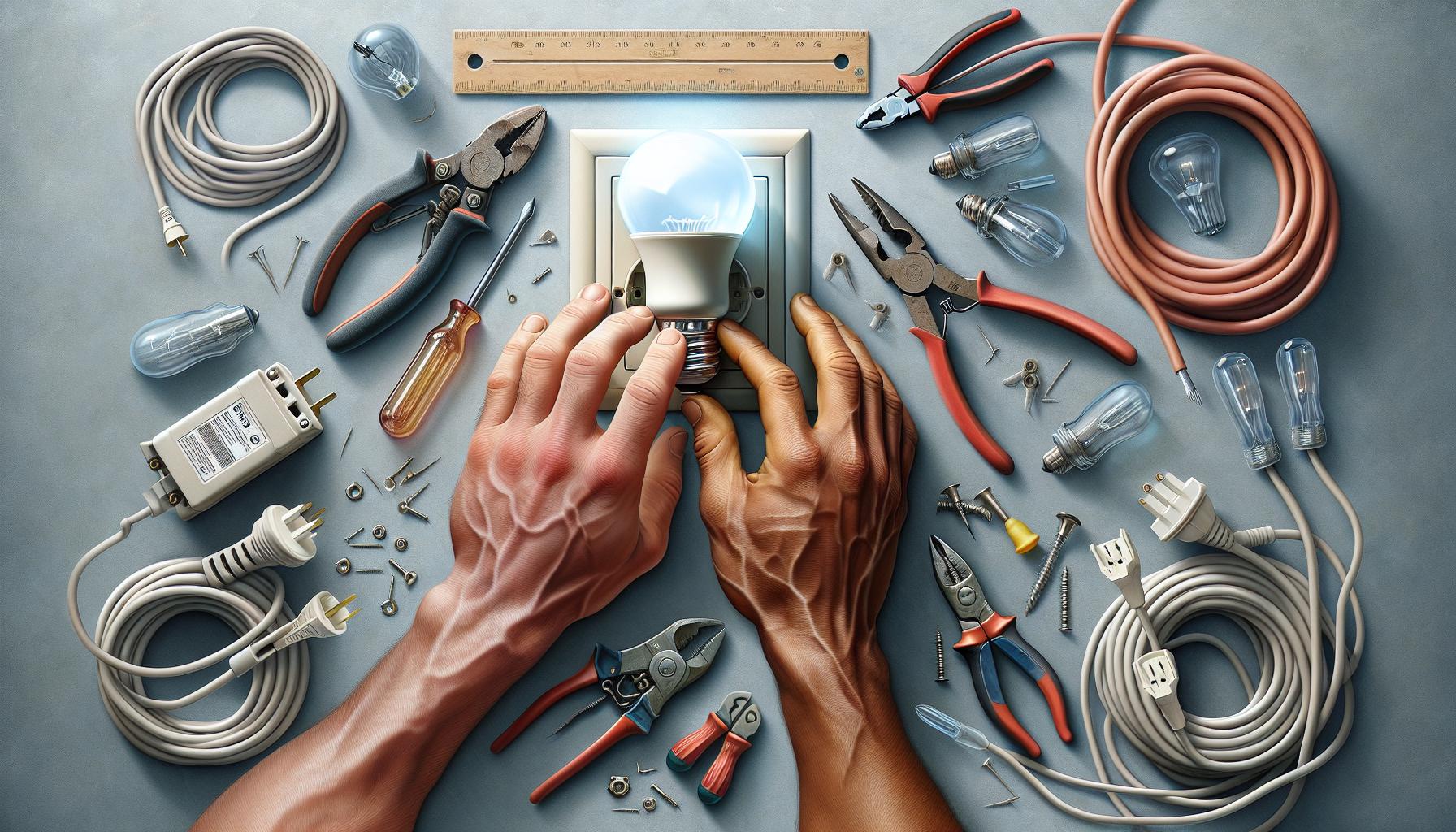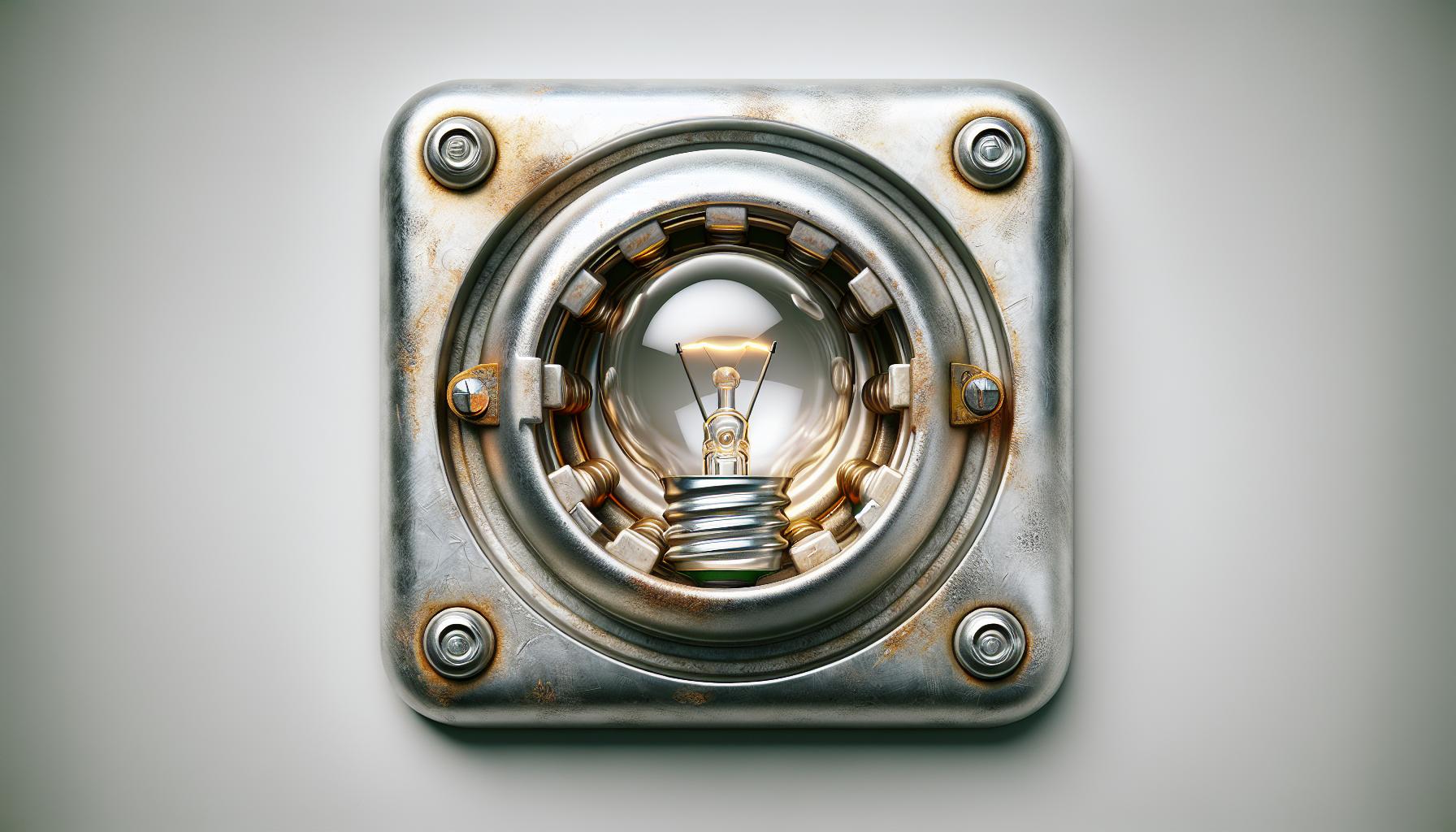Ever found yourself wrestling with a light bulb that just won’t budge? You’re not alone. Stuck bulbs can be a real headache, but with a few simple tricks up your sleeve, you can make sure they twist out as easily as they twisted in.
Knowing how to prevent your light bulbs from sticking in the socket is crucial for maintaining your home and avoiding unnecessary frustration. Let’s dive into some preventative measures that’ll keep your lights changing smoothly and your temper cool.
Reasons for light bulbs getting stuck in sockets
When you’re knee-deep in a home DIY project, few things are as aggravating as a light bulb that just won’t budge. You might wonder why this happens at all. Well, there are several culprits behind your bulbs’ stubbornness.
First off, corrosion is a major player. Over time, the metal base of the bulb can oxidize, leading to that frustrating bond between the bulb and the socket. Remember, any area with high humidity or just the passage of time can set the stage for corrosion.
Another reason could be over-tightening the bulb. It’s tempting to give that bulb an extra twist to make sure it’s secure, but ironically, that’s exactly what might cause you grief later on. When screwed in too tightly, the metal can deform, making it harder to unscrew.
Power surges are the silent bulb killers. They can weld the bulb’s base to the socket without you even realizing it. These surges may come from lightning strikes or electrical malfunctions in your home wiring, making the connection between bulb and socket a bit too permanent.
Don’t forget the quality of the bulb and socket. Cheaper materials can be prone to warping under heat, leading to a tighter fit over time. A good quality socket and bulb can decrease the chances of sticking.
Keep an Eye Out for These Signs:
- Discoloration of the socket or bulb base
- Difficulty twisting the bulb
- Flickering lights, indicating possible electrical issues
Shielding your lighting setup from these issues means less time wrestling with stuck bulbs, and more time basking in the glow of your well-lit room. With a bit more insight into what causes the problem, you’re already on track to keeping your bulbs freely moving, just as they should.
Tips for preventing light bulbs from sticking in sockets
Preventing your light bulbs from sticking begins with understanding the socket’s condition. Regular maintenance is your best defense against potential problems. It’s important to inspect sockets routinely for signs of corrosion or wear. This simple step is often overlooked, yet it’s incredibly effective at catching issues before they escalate.
Lubricate the Bulb’s Base
- Before installation, lightly apply a thin layer of non-conductive lubricant on the base of the bulb.
- Choose lubricants like petroleum jelly cautiously, ensuring they’re rated for electric fixtures to avoid fire hazards.
Don’t Over-tighten
When screwing in a light bulb, your instinct might tell you to give it that extra twist. But here’s a pro tip – don’t. The action should be firm but gentle to secure the bulb in place without putting stress on the socket. Feel it snug? That’s your cue to stop.
Use Quality Bulbs and Sockets
- Opt for high-quality light bulbs and fixtures with reputable brand pedigrees.
- Check for certifications and warranties which often signify better workmanship.
Surge Protection
Electrical surges can wreak havoc on your home’s lighting system. You can’t control the lightning, but you can certainly minimize its impact:
- Employ surge protectors to shield your light fixtures.
- Consider whole-house surge protection for comprehensive coverage.
Upgrade to LED
LED bulbs, known for their longevity, also have the perk of a cooler operation. They minimize the heat-induced expansion that sometimes contributes to sticking.
« Does Light Bulb Need Magnetism? Unveiling the Magnetic Secret in Your Lights
What is Wrong with Light Bulb? Why You Need to Switch to LED Now »
By staying proactive with these maintenance and installation tips, you ensure that your bulbs will perform reliably. It’s about creating the best lighting experience with minimal fuss, allowing you to relax and enjoy the ambiance of your well-lit home.
Importance of maintaining light sockets
You might not think about them often, but light sockets play a crucial role in your home’s lighting system. They’re the silent supporters, the unseen heroes ensuring your bulbs shine bright when you flip that switch. Let’s dive into why keeping them in top shape is essential for not only preventing bulb stickiness but also for the longevity of your lighting.
Firstly, well-maintained sockets help prevent electrical fires. Over time, sockets can experience wear and tear, which might lead to loose connections. These can generate sparks and potentially start a fire. Regular maintenance helps you catch and fix potential hazards before they become problems.
Another key point is that by keeping sockets in good condition, you’re making sure voltage is consistently delivered. Fluctuating power can shorten bulb lifespan and even cause bulbs to blow out prematurely. You want to ensure the voltage transmission is smooth and steady.
Sockets can also be a victim of corrosion due to humidity and environmental factors, leading to poor performance. By inspecting them and cleaning off any corrosion, you’re safeguarding against poor electrical contact, which can result in flickering or dim lights.
Taking care of sockets also means you’re giving your bulbs a proper home. Imagine trying to screw in a bulb into a socket that’s dirty or not aligned well—it’s a recipe for frustration. And while you’re at it, ensure sockets are firmly secured to their fixtures. A wobbly socket can cause uneven wear on bulb threads and, you guessed it, bulbs that stick.
To keep those sockets in tip-top condition, here are some quick tips:
- Turn off power before any maintenance to avoid shocks
- Gently clean sockets with a dry cloth
- Tighten any loose fixtures
- Check wires for signs of wear and tear
Common mistakes to avoid when dealing with stuck light bulbs
Changing a light bulb seems straightforward, but it often leads to a common problem: bulbs getting stuck in their sockets. When you encounter a bulb that won’t budge, there are several pitfalls you’ll want to steer clear of to prevent damage to your bulb, socket, or even yourself.
Using Excessive Force is the first mistake many make. When a bulb is stuck, your initial reaction might be to apply more muscle, but this can cause the bulb to break in the socket, leaving sharp shards behind. Instead, apply gentle pressure and try wiggling the bulb slightly to loosen it.
Forgetting Safety Precautions is a critical misstep. It’s easy to rush into solving the problem without considering the risks. Always turn off the power supply from the main switch or circuit breaker before you attempt to remove the bulb. This not only prevents electrical shock but also protects against accidental short circuits.
Neglecting the Right Tools can also lead to trouble. Sometimes, a specialized bulb extractor or a piece of duct tape can gently coax a sticky bulb from its socket. If you apply these tools correctly, you can avoid the aggravation of a bulb that refuses to come out.
Ignoring Signs of Corrosion in the socket may not immediately seem like a mistake, but it’s a significant oversight. Corrosion can cause bulbs to stick and indicates a deeper issue with moisture or wear that needs to be addressed. If you notice green or white powder or rust around the socket, it’s time for a careful cleaning or possibly a replacement.
Finally, one of the most common errors you’ll want to circumvent is Not Seeking Help When Needed. If you’ve tried the standard methods with no luck, or if you’re unsure of how to handle a particular situation, it’s okay to consult a professional electrician. They’re equipped to deal with challenging sockets and can help prevent damage to your lighting and home.
Conclusion
You’ve got the know-how to keep your light bulbs from becoming unwelcome tenants in their sockets. Remember, it’s all about regular maintenance and being mindful of the little things that make a big difference. Stay safe, avoid the common pitfalls, and don’t hesitate to ask for help if you’re ever in doubt. Here’s to bright, easy-to-change lights in your future!
Frequently Asked Questions
How can I prevent my light bulbs from getting stuck in the socket?
To prevent bulbs from sticking, regularly maintain your light sockets by cleaning them with a dry cloth and checking for any signs of corrosion or damage. Always ensure that the power is turned off before performing any maintenance.
What should I do before cleaning or maintaining a light socket?
Before you start, you should always turn off the power to the light socket to prevent electrical shock. Wait until the bulb is cool to the touch if it has been on recently.
What is the safest way to clean a light socket?
The safest way to clean a light socket is to first turn off the power, then gently wipe the inside with a dry, lint-free cloth. Avoid using moisture, which can lead to short circuits.
Can I use lubricants to prevent stickiness in light sockets?
While some may consider using lubricants, it’s important to be cautious and use only products that are safe for electrical fixtures. Check the manufacturer’s instructions and, when in doubt, stick to dry maintenance methods to avoid risks.
What common mistakes should I avoid when extracting a stuck light bulb?
Avoid using excessive force, which can break the bulb. Disregarding safety precautions, neglecting to use the correct tools, ignoring signs of corrosion within the socket, and not seeking help when needed are also mistakes to avoid.
When should I seek professional help with my light socket?
You should seek professional help if you notice worn-out wires, persistent corrosion, or if a bulb has broken off in the socket and you’re unable to safely remove it. Additionally, if you feel unsure about any maintenance or repair, it’s best to call a qualified electrician.




